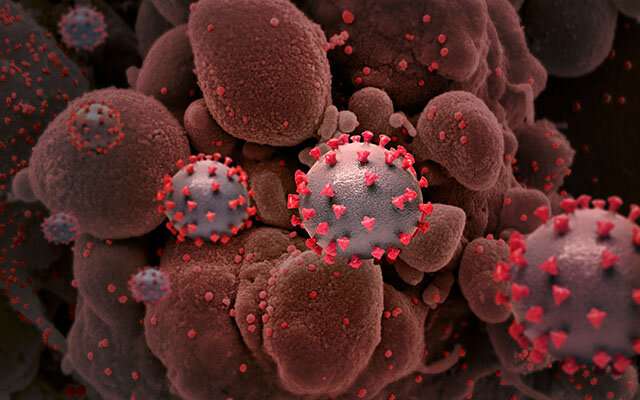Building a better vaccine for SARS-CoV-2

Previous research has shown that the spike (S) protein of -CoV-2 binds to a host cell receptor, facilitating viral entry. Research has also shown that SARS-CoV-2 variants that lose the furin cleavage site at the spike protein (S gene mutants) emerge rapidly during propagation in Vero cells (lineage of cells used in cell cultures).
Now, new research published in mBio, an open-access journal of the American Society for Microbiology, shows that hamsters inoculated with S gene mutants show resistance to subsequent infection with both the parental strain and the currently emerging SARS-CoV-2 alpha and gamma variants (B.1.1.7 variant, first identified in the U.K. and P.1. variant, first identified in Brazil, respectively). The research highlights the potential benefits of S gene mutants as immunogens (antigens that can trigger an immune response).
"SARS-CoV-2 S gene mutants may be used as immunogens for live-attenuated vaccines, similar to the current yellow fever vaccine," said Hirofumi Sawa, Ph.D., M.D., study principal investigator in the Division of Molecular Pathobiology, International Institute for Zoonosis Control, at Hokkaido University, in Sapporo Japan, and with One Health Research Center at Hokkaido University.
In the new study, researchers set out to further characterize SARS-CoV-2 S gene mutants properties through animal experiments using hamsters. All infected animals were maintained in isolators at the biosafety level-3 facility. "Our experiments were conducted in accordance with set guidelines. Because we had to move animals with the isolators into the safety cabinet to monitor the animals, we did a lot of heavy lifting on a daily basis," said lead study author Michihito Sasaki, Ph.D., D.V.M., a lecturer in the Division of Molecular Pathobiology, International Institute for Zoonosis Control, at Hokkaido University.
The researchers found that the SARS-CoV-2 S gene mutants are weakened variants but can induce protective immunity against infection with clinical strains of SARS-CoV-2. "Because these variants rapidly emerge through SARS-CoV-2 propagation in some cell lines, including Vero cells, researchers should be alert to the possibility of unexpected contamination with these variants," said Dr. Sasaki.
The researchers say their next steps are to uncover the mechanism of severe COVID-19 and develop new therapeutic strategies for COVID-19. "To overcome the COVID-19 pandemic, a multisectoral and transdisciplinary approach under the 'One Health' umbrella is needed," said Dr. Sawa. "At our International Institute for Zoonosis Control, we endeavor to establish effective strategies for prediction, prevention and control of zoonotic diseases, including COVID-19."
More information: Michihito Sasaki et al, SARS-CoV-2 Bearing a Mutation at the S1/S2 Cleavage Site Exhibits Attenuated Virulence and Confers Protective Immunity, mBio (2021). DOI: 10.1128/mBio.01415-21





















